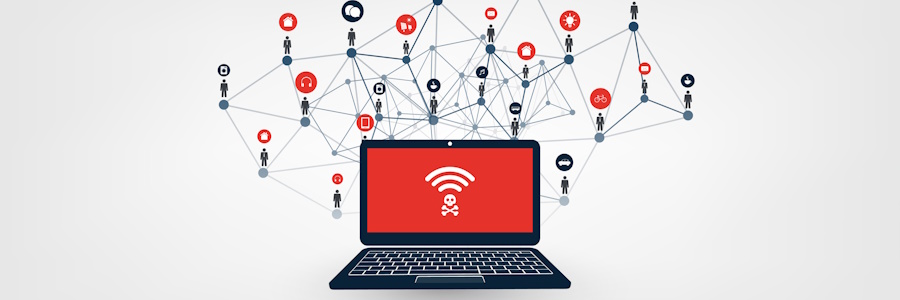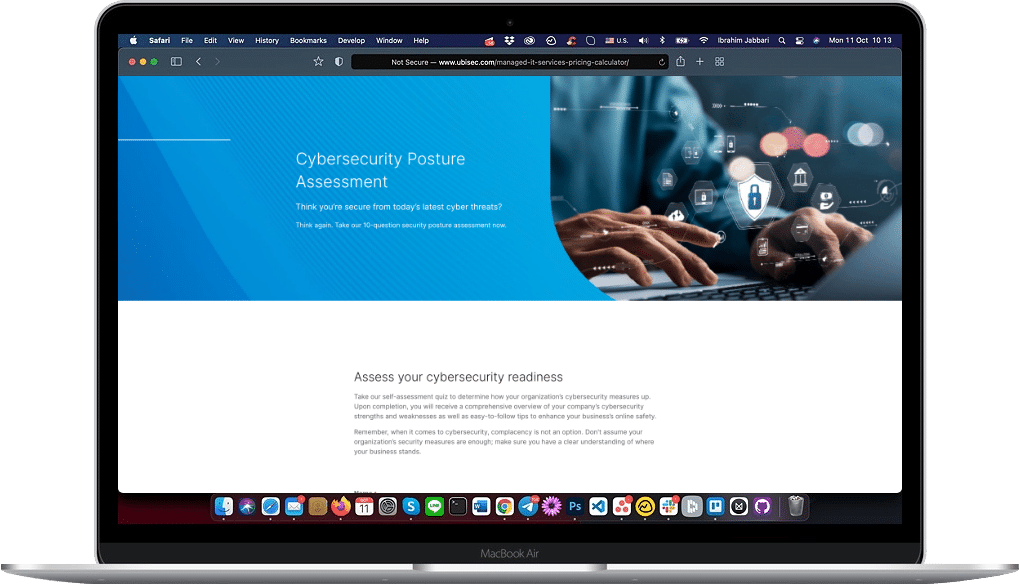In today’s digitally interconnected world, the convenience of WiFi has become indispensable, enabling seamless communication and access to information. However, with this convenience comes the lurking threat of cyber-attacks, one of the most deceptive being WiFi spoofing. This sophisticated form of cybercrime can compromise personal and sensitive data without users even realizing it. Understanding the nature of WiFi spoofing, its risks, and how to protect against it is crucial for maintaining the security of your digital environment. This guide delves into the intricacies of WiFi spoofing and arms you with the knowledge to safeguard your online activities.
What is WiFi Spoofing?
WiFi spoofing is a deceptive tactic where cybercriminals create a fake WiFi network to trick people into connecting with it. It’s akin to someone setting up a fake store that looks just like a real one to deceive customers. Attackers mimic the names of legitimate networks to create these phony WiFi networks. For instance, they might name their network ‘FreeCompanyWifi’ to make it look like a genuine network provided by a business, much like a fake store copying an actual store’s name and logo. Unwary users frequently fall for these tactics, particularly in public locations like cafes, airports, and hotels where free WiFi is standard.

There are different types of WiFi spoofing attacks:
The 'Evil Twin'
In this attack, cybercriminals set up a fake WiFi network that looks identical to a real one. Once a user connects to this ‘evil twin,’ the attacker can access their data. A fake WiFi network is comparable to a phony store owner who can steal from customers who unknowingly enter their store. Victims might unknowingly input sensitive information, such as login credentials and credit card numbers, which the attacker can then use for fraudulent activities.
The 'Man-in-the-Middle' (MitM) Attack
In this type of attack, the bad actor positions themselves between the user and the legitimate network, intercepting and possibly altering the user’s data. Imagine a customer sending a message to the actual store owner, but a fraudster intercepts and modifies the message in the middle of the transmission. A MITM attack can lead to data breaches where confidential business communications and transactions are compromised, potentially causing severe damage to the organization.
In both instances, WiFi spoofing aims to gain unauthorized access to personal or confidential information, including passwords, credit card numbers, and other data. These attacks can evade detection for prolonged periods, allowing attackers to steal valuable information continuously.
Take our cybersecurity assessment quiz here to evaluate your network’s security and uncover potential vulnerabilities today!

Why Should Businesses Be Concerned About WiFi Spoofing?
Data Breaches
WiFi spoofing can lead to data breaches, where attackers steal sensitive company information like login credentials or financial data. Data breaches can severely impact a business, including economic loss and legal consequences. If the affected data includes personal information protected by laws like GDPR or HIPAA, regulatory penalties could incur.
Malware Infection
Devices connected to the spoofed network can get infected with spyware or ransomware, compromising the integrity of business systems. This spyware could lead to a complete halt in operations or significant financial losses. Ransomware locks down critical systems until you pay a ransom, disrupting business continuity and potentially causing irreversible data loss if you lack adequate backups.
Disrupted Operations
The spoofed network can cause network slowdown or complete outage, disrupting daily operations and potentially causing significant financial loss. This downtime can affect productivity and customer satisfaction. Short moments of downtime can result in decreased sales activity and irrefutable damage to customer relationships, especially in highly competitive markets.
Reputational Damage
Should WiFi spoofing compromise sensitive data, businesses risk losing the trust of their customers, resulting in reputational damage. Rebuilding this trust can prove difficult and may have lasting effects on business prosperity. Customers might opt for competitors if they perceive their data as insecure, leading to revenue loss and decreased market share.

How Can Businesses Protect Themselves from WiFi Spoofing?
Secure Your WiFi Network
Businesses must implement robust security measures like WPA2 or WPA3 encryption to protect their WiFi network. These additional security measures make it harder for hackers to gain unauthorized access. Additionally, implementing strong passwords and regularly updating encryption protocols can further enhance security.
Use a VPN
A Virtual Private Network (VPN) enhances security by encrypting all traffic between the user and the network, adding an extra layer of protection. A VPN makes it nearly impossible for spoofers to intercept and manipulate your data. VPNs also allow remote employees to access company resources securely, ensuring data integrity even when working off-site.
Regularly Update Devices and Software
Update all devices and software regularly to address any known security flaws. These periodic updates reduce the chances of WiFi spoofing. Regular updates also include patches for vulnerabilities that cybercriminals could exploit, making them essential for maintaining a secure network environment.
Implement a Network Security System
Businesses should use a network security system to monitor and control network traffic. This system can detect and alert about any suspicious activity, helping to avert WiFi spoofing. Sophisticated systems utilize machine learning to detect anomalies and potential threats, offering an additional layer of proactive security.
Educate Employees about WiFi Spoofing
Train employees to recognize and evade suspicious network connections, advising them to connect only to trusted, verified networks. Consistent training sessions and awareness programs can keep employees up-to-date on the latest threats and optimal cybersecurity practices.
Use Firewalls
Firewalls help restrict unauthorized access to your network and halt data transmission to suspicious destinations. Configuring firewalls to limit traffic based on rules and monitoring inbound and outbound traffic can significantly reduce the risk of a successful WiFi spoofing attack. This proactive approach enhances network security and safeguards against potential threats.
Regularly Change Network Passwords
Regularly updating network passwords helps businesses mitigate the risk of unauthorized access to their networks. This approach guarantees that if a password is compromised, it retains utility for attackers only temporarily. Enhance security by employing complex passwords that incorporate letters, numbers, and special characters.
Disable Broadcast SSID
Turning off the broadcast SSID makes the network invisible to outsiders, decreasing the likelihood of WiFi spoofing. This additional security measure requires attackers to know the precise name of the network to attempt a spoofing attack.
Use MAC Address Filtering
MAC address filtering allows only specific devices to connect to the network, reducing the risk of unauthorized access. By maintaining a whitelist of approved devices, businesses can ensure that only known and trusted devices can access their WiFi network, further mitigating the risk of spoofing.
Looking to outsource all or part of your IT services to a Managed Service Provider? Click here to get a free budget estimate!
Conclusion
WiFi spoofing poses significant threats to businesses, including data breaches, malware infections, disrupted operations, and reputational damage. Proactively securing your WiFi network is essential in protecting your business from these cyber threats. Implementing strong encryption, using VPNs, regularly updating software, educating employees, and employing robust network security systems are all critical measures in defending against WiFi spoofing. Contact us today to protect your network!
FAQs
Yes, WiFi spoofing is illegal. It involves unauthorized access and potentially stealing sensitive information. Engaging in WiFi spoofing can result in severe legal penalties, including fines and imprisonment.
WiFi spoofing poses risks such as data theft, malware infection, operational disruptions, and reputational harm. Depending on the attack’s severity, victims may endure financial losses and legal repercussions.
You can detect WiFi spoofing by using network security tools that monitor for unusual activity and verify the authenticity of WiFi networks before connecting. Train employees to look for discrepancies in network names and alert IT departments if they notice anything suspicious.
To secure your WiFi from spoofing, use strong encryption (WPA2 or WPA3), regularly update devices and software, use a VPN, educate employees, and implement firewalls and network security systems. These measures create a multi-layered defense that significantly reduces the risk of successful WiFi spoofing attacks.









